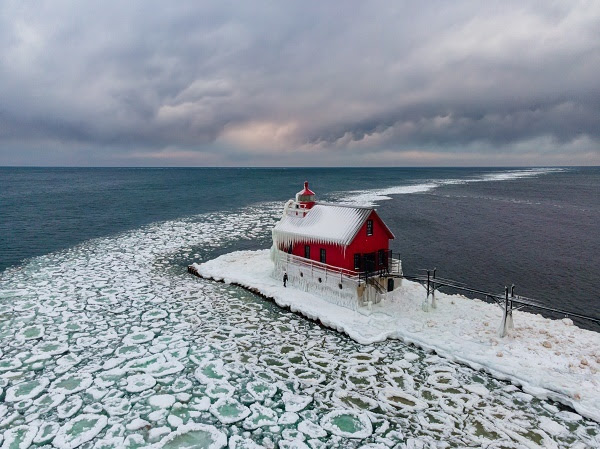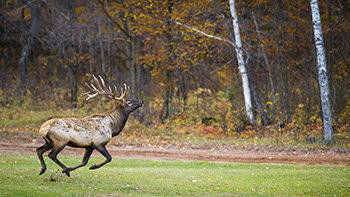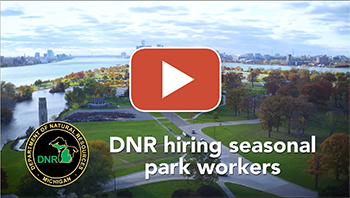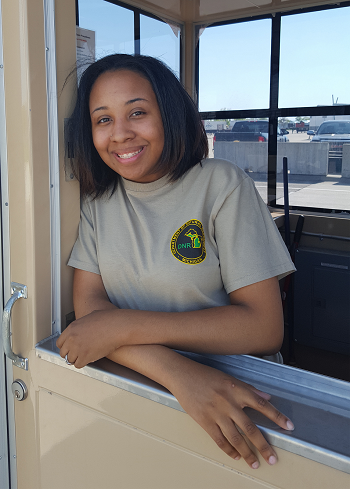| This week’s stories may reflect how the Department of Natural Resources has adapted to meet customer needs and protect public health and safety. Follow our COVID-19 response page for updates on access to facilities and programs.
We’ll continue to share news and information about the best ways to discover and enjoy Michigan’s natural and heritage resources! Here’s a look at some of this week’s stories:
See other news releases, Showcasing the DNR stories, photos and other resources at Michigan.gov/DNRPressRoom.
PHOTO FOLDER: Larger, higher-res versions of the images used below, and others, are available in this folder. Accompanying caption info follows:
Christmas ornament on tree: Not sure what to do with holiday wreaths and trees? There are good options that don’t involve putting them in the trash. (Photo courtesy Pixabay.) Elk in Pigeon River: The recent elk hunting season update is on the Jan. 13 Michigan Natural Resources Commission meeting agenda. Seasonal ranger and seasonal worker – Belle Isle: The DNR is hiring for both of these positions for spring, summer and fall.
 Want to see more pictures like this, taken by Michigan state parks photo ambassador Joel Marotti at Grand Haven State Park in Ottawa County? Visit Instagram.com/MiStateParks to explore photos and learn more about the photo ambassadors! For more on the photo ambassador program, call Stephanie Yancer at 989-274-6182. Want to see more pictures like this, taken by Michigan state parks photo ambassador Joel Marotti at Grand Haven State Park in Ottawa County? Visit Instagram.com/MiStateParks to explore photos and learn more about the photo ambassadors! For more on the photo ambassador program, call Stephanie Yancer at 989-274-6182.
 An update on the state forest roads inventory, presentation of the American Legion Award, an overview of elk hunting season results and several land transactions are just some of the agenda items for the next meeting of the Michigan Natural Resources Commission, scheduled for Thursday, Jan. 13. An update on the state forest roads inventory, presentation of the American Legion Award, an overview of elk hunting season results and several land transactions are just some of the agenda items for the next meeting of the Michigan Natural Resources Commission, scheduled for Thursday, Jan. 13.
The meeting will start at 9 a.m. in the Forum at the Michigan Library and Historical Center, 702 W. Kalamazoo St., in downtown Lansing. For everyone’s safety, masks are recommended for all visitors.
See the meeting’s full draft agenda at Michigan.gov/NRC. For more information or to request time to speak at the meeting, contact Victoria Lischalk at 517-599-1067 or [email protected]. |
 As you pack up holiday décor while munching on a dwindling stash of sugar cookies, you might wonder if there’s an alternative to cramming decorations like live wreaths, garlands or Christmas trees into the trash can. As you pack up holiday décor while munching on a dwindling stash of sugar cookies, you might wonder if there’s an alternative to cramming decorations like live wreaths, garlands or Christmas trees into the trash can.
An easy option is to break up foliage and add it to a compost pile where it will mix with other organic material like coffee grounds and kitchen scraps, eventually decomposing and enriching the soil. View composting tips from the Michigan Department of Environment, Great Lakes, and Energy to get started.
Bag and dispose of any real berries and bits of floral arrangements crafted from non-native plants in the trash.
If you have space, scattering branches near a woodland edge in your backyard is another option, which will create brushy cover that cottontail rabbits will love to hide in. Squirrels, foxes, chipmunks and birds like wrens and cardinals also appreciate brush. You can do this on your own property, but don’t dispose of trees on public lands or waterways. Keep in mind, too, that providing habitat for small mammals could lead to visitors such as coyotes, hawks and owls.
Before placing foliage in the outdoors, make sure there are no ribbons, wires, fake berries or bits of tinsel still attached.
“Wires and ornament hooks could entangle wildlife, and fake berries could be swallowed if mistaken for the real thing,” said DNR wildlife outreach coordinator Rachel Leightner.
Dry conifers can be flammable, so spread foliage out in pieces instead of placing it in one big pile if you have a lot of material.
No space to compost a tree outside, or your local ordinances don’t allow it? See if there is a curbside pickup program or community compost drop-off site near you. With a woodchipper, you also can turn a holiday tree into garden mulch.
If you happened to hang mistletoe (the “kissing plant”) this season, kiss it goodbye by tossing it in the trash, not the woods. Some varieties of this parasitic plant are invasive.
Questions? Contact Rachel Coale, DNR Forest Resources Division, at 517-930-1283. |
 Whether you want to spend more time in some of Michigan’s most beautiful destinations, keep busy in retirement or lay the foundation for a career in natural resources, one of hundreds of positions as a seasonal park worker or ranger with the DNR Parks and Recreation Division may be right for you. Whether you want to spend more time in some of Michigan’s most beautiful destinations, keep busy in retirement or lay the foundation for a career in natural resources, one of hundreds of positions as a seasonal park worker or ranger with the DNR Parks and Recreation Division may be right for you.
Watch this brief video to hear from past and current seasonal park workers about what they gained from these opportunities.
There are approximately 1,300 seasonal park worker positions available in state parks, state forest campgrounds, boating access sites and harbors. These frontline staff help answer visitor questions, register campers, clean park buildings, mow grass, maintain trails and more. The positions start at an hourly rate of $10.20 or $11 (depending on region) and offer flexible scheduling (up to 1,040 hours between April and October) and may qualify for academic or internship credit.
More than 50 seasonal park rangers also will be hired throughout the state. A park ranger helps carry out day-to-day operations and maintenance and other essential duties. Positions are paid between $18.29 and $25.70 an hour and receive state employment benefits. |
 To apply, visit Michigan.gov/DNRJobs: To apply, visit Michigan.gov/DNRJobs:
- Seasonal park worker positions: Should be 18 or older and have a high school diploma or equivalent. Provide your name, email, phone number and desired work location(s) on the interest form. Applying should take less than five minutes. Interested applicants also can text “Hire” to 80888 and receive a link to the interest form.
- Seasonal park ranger positions: Must be 18 or older and have a high school diploma or equivalent. Complete a State of Michigan employment application.
“If you love Michigan’s great outdoors and are looking for a seasonal position with flexible hours, come work where you like to spend time the most,” said Michael Desnoyer, administrative services chief for the DNR Parks and Recreation Division. “These positions are also ideal for college students, teachers and retirees.”
Learn more about these and other openings at Michigan.gov/DNRJobs. Questions? Contact Michael Desnoyer at 517-242-2194. |
 Ever wonder what it’s like to do the job of a Michigan conservation officer? Get a close-up look during this season’s opening episode of “Wardens” – the Outdoor Channel television show featuring the work of COs and other DNR professionals including wildlife biologists, foresters, fisheries technicians, park rangers and many others. Ever wonder what it’s like to do the job of a Michigan conservation officer? Get a close-up look during this season’s opening episode of “Wardens” – the Outdoor Channel television show featuring the work of COs and other DNR professionals including wildlife biologists, foresters, fisheries technicians, park rangers and many others.
The season’s first episode will be available at no charge throughout January. Highlights include conservation officers tracking down trespassers and volunteers helping to support a pheasant hunt for military veterans and first responders.
Episodes air on the Outdoor Channel every Monday at 5:30 p.m. and then are repeated Monday at 2:30 a.m., Tuesday at 7:30 a.m., Friday at 8:30 and 11:30 p.m. and Saturday at 5:30 p.m. (All times Eastern Standard).
To get the Outdoor Channel, ask your local TV service provider or Amazon Prime, or go to OutdoorChannel.com or MyOutdoorTV.com or call 1-855-44OUTDOOR. More than 52 episodes of “Wardens” have featured the state of Michigan.
Questions? Contact Dave Haupt at 517-420-0819. |
|





